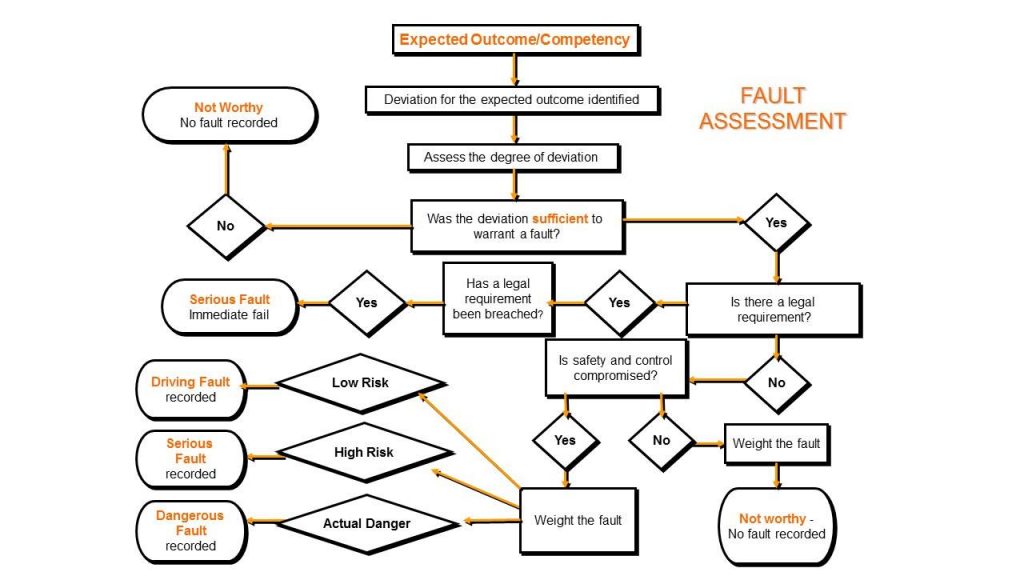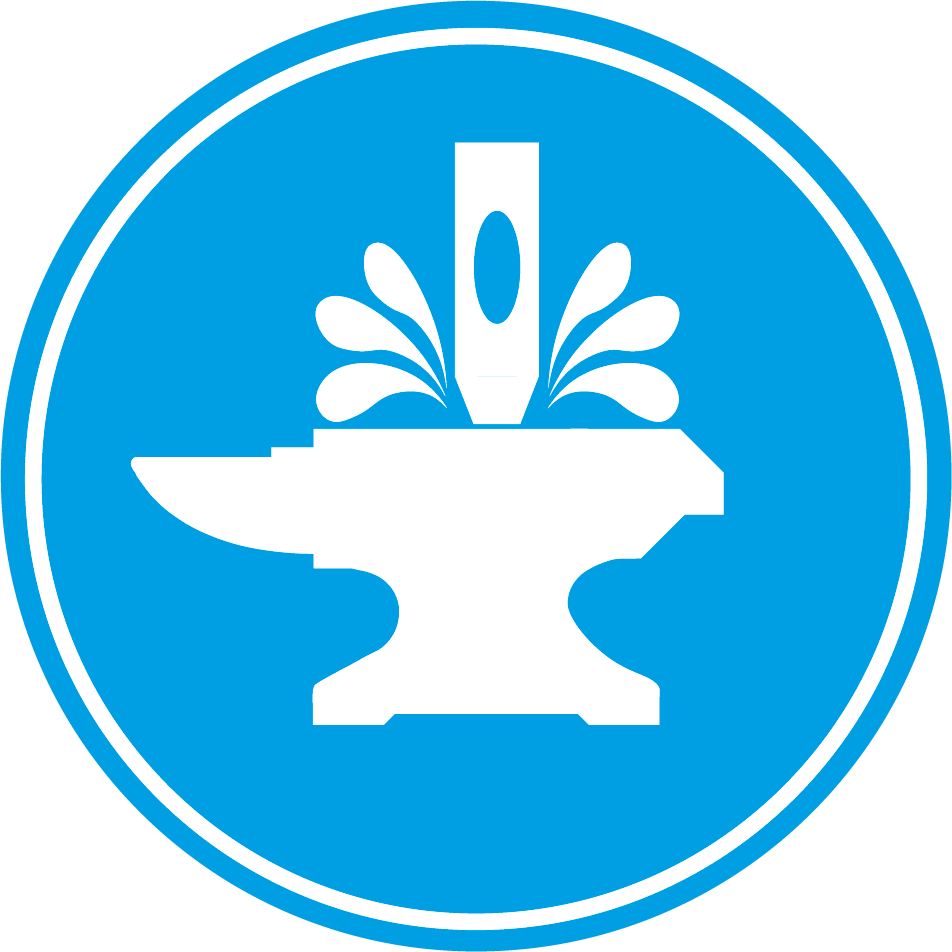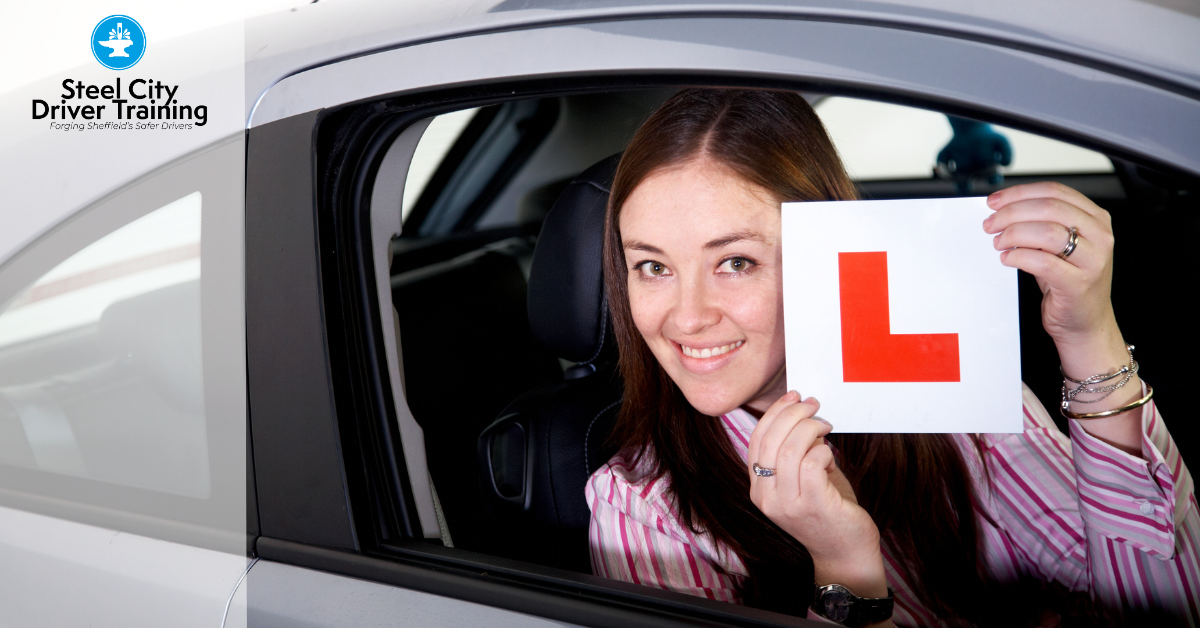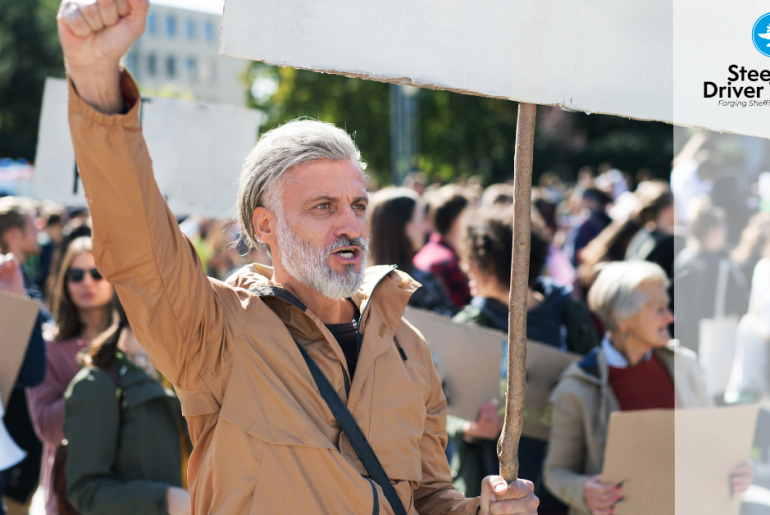There are a lot of myths about what happens on the driving test. Some are accurate, some are not. This article aims to set the record straight and give candidates a good idea of what to expect when arriving at the driving test centre.
Contents
Before the test starts.
The Eyesight Test & Tell Me Question.
Moving away from the test centre.
Conversation or music?
Pulling up on the left and moving off.
The Show Me Question.
The independent drive.
The manoeuvre.
The controlled stop.
The result.
Before The Driving Test Starts
First things first. When you arrive at the Driving Test Centre find the candidate parking area and reverse into a parking space. Make sure you can drive forward out of your parking bay, otherwise, the first thing your examiner is going to see you do is reverse.
Nerve-wracking much?
Once you are parked find your test centre waiting room. Details of the test centres in Sheffield are in the panel opposite. Take a seat and wait for the test start time.
You should not arrive at your test centre more than 10 minutes before your test start time. You may interfere with tests already in progress.
When your test time comes, the examiner will come to you and call your name. They will either join you where you are or invite you to join them at a table or desk.
In the test centre, the examiner will do several checks:
Sheffield Test Centres
Sheffield Handsworth
The candidate parking bays are directly in front of the main entrance to the test centre. Ignore the one-way markings and drive towards the three large red shutters. Park on either side, secure your car and walk to the other side of the test centre building. The waiting room is inside the door next to the bench.
Sheffield Middlewood Road
Turn onto Wynn Gardens then take the second left directly behind the chicken shop. The candidate parking bays are directly in front of you, pull a U-Turn and reverse into the bays. If the bays are full park on the sides facing back towards the entrance. The waiting room is in the shutter furthest from the chicken shop.
You will be asked to sign a declaration on the examiner’s iPad. The signature you put on the iPad must match the signature on your licence.
Nick’s Top Tip
Many candidates I take to test say that they struggle to get their signature matching their licence. They often say it’s because they applied for their licence a long time ago. I suggest getting your tablet out and practising signing your name in the notes section before going to the test centre.
Once the checks have been completed the examiner will take you outside the test centre to carry out the eyesight check. Before they go they will ask if you want your instructor or accompanying driver to join you for the test. If you say no, they will also ask if you want the instructor or accompanying driver present for the debrief at the end.
You can change your mind about having your instructor in for the test up to when you get in the vehicle. You will also be asked again at the end of the test if you want them present for the debrief.
The Eyesight Test & Tell Me Question
Legal Minimum Eyesight Standard
The eyesight check requires that the candidate either read aloud or write down a new style number plate (2 letters, 2 numbers, 3 letters) at a distance of 20 meters. There is no alterntive to this test.
The eyesight check is the first thing carried out outside the driving test centre. The examiner will ask you to stand more than 20 meters away from a vehicle and read the registration number aloud. The candidate can choose to write the number plate down if they are unable to say the characters.
If you wear corrective lenses to read the number plate the examiner will mark the test report accordingly and if your licence doesn’t already have code 01 against your entitlements, the code will be added to your full licence when you pass and you will not be able to drive without corrective lenses legally.
If you use glasses for the eyesight check and then take them off during the driving part of the test the examiner can terminate the test.
If you are unable to complete the eyesight check the examiner will move you to approximately 20 meters and ask you to try again. If the second attempt is unsuccessful the examiner will return to the office and get the ‘Official Tape Measure‘, (and no I am not making that up) measure the exact distance and give you a third attempt.
If you are unable to read the number plate on the third attempt the driving test will not go ahead.
The examiner will then walk you to your car and ask the Tell Me question en route. You can find a full list of the Tell Me questions and their answers here. If you get the Tell Me question wrong you will probably get a driving fault, unless you get it very wrong.
Moving Away From The Driving Test Centre
Once you’ve completed the Tell Me question, the examiner will instruct you to get into the car and make yourself comfortable but not turn the car on. They will do a walk-around check on the vehicle you’ve presented to test in to make sure it is safe and legal for the test.
If the examiner finds that your L Plates are not right they may help you re-fit them but try to get them in the right place and on properly. The examiner could refuse your vehicle for test if the L Plates are not correctly displayed. The other thing the examiner will check is the tyres on the car. If they don’t have sufficient tread the test won’t go ahead.
Once they are satisfied the vehicle is safe and legal the examiner will join you in the car. At this point, you will find out if your Independent Drive is going to be by sat nav or by road signs. If the examiner gets a TomTom out, you are following the sat nav.
The examiner will complete a little bit of paperwork and then give you all the instructions you need to start the test.
If you are accompanied by your instructor or another driver, once the examiner says, ‘When you are ready, carry on,’ or similar they cannot speak or take any part in the test until the examiner says the test is over. If they do, your test may be terminated.
When the examiner tells you to get underway make sure you carry out all your checks before moving off and please, ensure you are in the correct gear!
Your driving test is now officially underway! Up to this point, the test could be refused but not failed. From the point you are told to move off, you risk driving, serious or dangerous faults.
You have to drive for at least 30 minutes on your test for it to be legal. That means from the time you start moving to the time you pull up at the end of the test, it does not mean that when you pull up or park on your test the clock stops.

The flow chart above shows how an examiner weighs a fault on a driving test.
Tales from the Driving Test Centre
It seems silly to remind you to make sure you are in the correct gear. I’ve seen a driving test which has lasted -6 feet. Fortunately for me, it wasn’t one of my learner drivers but at Sheffield Middlewood Road a candidate managed to put a manual Toyota Yaris into reverse rather than 1st when setting off.
The candidate was very nervous and substituted power for confidence. She set off like Lewis Hamilton at the start of the grand prix and only the examiner’s quick reflexes stopped her from crashing into a brick wall!
MYTH: If you fail the test is stopped. This used to be true. During the COVID-19 restrictions the examiner would bring a candidate back to the test centre after a serious or dangerous fault, or if the candidate accrued 16 driving faults. Since restrictions eased the test will usually go the full distance regardless of the result.
Some extreme faults on test may result in a ‘Walkback’, where the examiner terminates the test and is either picked up by a colleague or walks back to the driving test centre.
Conversation or Music on Your Driving Test?
One of the first things your examiner will say to you on your test is something like:
“What would you be doing if you weren’t on a driving test today?”
How you answer this question will influence how chatty your examiner will be. If you give a short answer or don’t answer at all, the examiner will not push you to make conversation. If you give a long and detailed answer the examiner will be a lot more talkative during your drive.
Conversation isn’t the only option on your driving test. You could choose to listen to music instead. Either you can listen to the radio or you could set up a playlist. When I did my driving instructor driving test, I had a playlist of movie music on quietly in the background. Please note the following:
Pulling Up on the Left and Moving Off
On your driving test you will be asked to pull up on the left and move off several times. The examiner has to get you to stop at least 3 times during your test but may do it more. There are 4 different moving off manoeuvres the examiner could ask you to complete.
Level
You may be asked to pull up on the left-hand side and then move off safely on level ground.
Downhill
You may also be asked to pull up facing downhill and prove you can control the vehicle’s natural desire to move off.
Uphill
You will be asked to pull up on the left on an uphill slope and show that you can safely carry out a hill start.
Angled
An angled pull away is one that needs you to steer around a car parked in front of you vehicle.
The examiner may also ask you to pull up at the side of the road to brief you on either the Reverse Parallel Park or the Controlled Stop. These wouldn’t count as one of the mandatory pull up and move offs but you do need to do them safely with all the checks you would normally do.
The Show Me Question
The Show Me question will be asked on the move. The examiner will ask you to complete an action which activates an auxiliary function of the car. These can be either:
The questions listed in bold are deemed safety-critical and must be answered satisfactorily by all candidates. Those not in bold are less so.
You do not get a choice in which action you carry out, except candidates with a disability who can notify the test centre in advance if they cannot do the actions which are not in bold above.
You can find out more about the Show Me questions by reading the article here or by visiting @SteelCityDrive on TikTok.
The Independent Drive on your Driving Test
The independent drive section of the driving test will see you finding your own route, either by following road signs or taking directions from the SatNav. You will know before you move off which you are doing because if the examiner doesn’t put the TomTom on the dashboard before you move off, it’s staying in their bag throughout.
Following Road Signs
Following SatNav
Nick’s Top Tip
Don’t worry too much about the independent drive. I’ve scoured the DL25 at length and there isn’t any box on there marked, ‘they took a wrong turn’. Where people take a wrong turn and fail the test it’s usually because they did something unsafe while trying to sort out the situation. Keep calm, even if you go off route. You’ve not failed if you’ve not done anything which increases risk.
MOTORWAYS
You may have been on the motorway with your driving instructor. It’s now allowed for learners to use the motorway when accompanied by an Approved Driving Instructor and in a dual control equipped car. The examiner isn’t an ADI, even if they once were an instructor, they can’t be an examiner and an instructor at the same time. That means they cannot take you onto a motorway.
Steer clear of the big blue signs at motorway junctions!
If you accidentally go onto the motorway the test will likely be terminated as you are not permitted to drive on the motorway until you hold a full licence.
The Manoeuvre
You will be asked to complete one of four reversing manouevers during your driving test. When you look at the available options, you’ll see what it is they are looking to assess here.
There is one word which is common to all four manouevers, REVERSE. It’s the going backwards that the examiner really wants to see. So on the forward bay park, you can fail on the way in, but you can’t pass until you’ve got it back out again.
The key things to consider on a reversing manouever are:
The Controlled Stop
MYTH: Every learner driver has to do an emergency stop. Again, this was once true but isn’t any more. When I did my driving test every test included the controlled stop manoeuvre. But that meant that an examiner was being thrown about the car 8 times a working day, or 40 times a week. The risk of injury is quite high when you are emergency stopping that often.
The rules were changed a while ago and instead of every test, the examiners now have to carry out the controlled stop on 33% of tests. This means that the chances are high that you will never be tested on the controlled stop! Because we don’t know in advance if you will be tested, we have to teach you how to do it all the time, and the 33% of tests that have one are checking that the instructors are doing it right.
If you are asked to do a controlled stop on the driving test the examiner will pull you up at the side of the road and breif you on the manoeuvre. They will let you know how they intend to signal you to stop, (the days of smashing the dashboard with clipboards is long gone, iPads don’t like being treated like that!) then tell you to move off when you are ready.
Proceed at a normal speed for the road and don’t worry about what the examiner is doing. They will make sure that it’s safe to do the controlled stop. When they give the signal, hit the brakes as hard as you can. (NOTE: cars from the turn of the millenium are likely to have ABS but not all of them do. If you are presenting to test in an older car, check it has ABS. If it doesn’t you’ll need to be careful not to lock the wheels up when braking. If it does have ABS, give the pedal all you’ve got and let the computers sort it out.)
Once the car has come to a stop, I suggest applying the handbrake. In an automatic it allows you to take your feet off the pedals and relax. In a manual it should prevent you rolling back when you start off again.
The examiner will tell you to move off when you are ready. Don’t just bring the clutch up and drive away, check all around the car to make sure it’s safe. You didn’t check the mirrors before slowing down so you’ve got no idea whats around you now.
If the examiner has breifed you for a controlled stop but the traffic situation changes and it isn’t safe, they will let you know that you aren’t doing an emergency stop after all and to continue as normal. You will only be asked to do one controlled stop on your test, unlike in lessons where your instructor should let you know when you are done, the examiner doesnt need to as you will only do a single controlled stop.
The Driving Test Result
Once you return to the driving test centre and park up the test is over. You’ll pull into the test centre and the examiner will either direct you to pull over at the side or to park in a bay. If you’ve not done one of the four reversing manoeuvres out on your test, you may be asked to do one at the test centre at the end. If you’ve done one out on the road, the park at the test centre won’t be assessed, but you still have to do it safely.
I’ve had more than one leaner return to the test centre with a passing grade, only to bump the kerb parking at the end and pick up a serious fault, so do be careful.
Once you’ve stopped and turned off the car the examiner will collect up their things before giving you the result. This allows time for your instructor to meet you at the side of the car to listen to the debreif. The examiner will again give you the choice of having us listen in or not.
Nick’s Top Tip
I would always advise you to have your instructor or accompanying driver present for the debreif. Even if the test has been awful, (which it won’t, you’ll be fine!) it’s important for us to know the examiner’s thoughts so we can help you fix the issues and be successful next time out.
The examiner will give you one of three possible test ends:
- That’s the end of the test and I’m pleased to tell you you’ve passed!
- That’s the end of the test and I’m sorry to say you’ve been unsuccessful.
- That’s the end of the test and I’m sorry to say that due to <<Insert reason here>> I am unable to give a result.
If you’ve passed:
The examiner will go through any faults you may have accrued out on the road before asking to see your licence again. They will fill out your pass certificate and offer to take your photocard away and have your new full licence sent out automatically.
If your address is not correct or your licence needs coding, you will not be able to take advantage of this and will have to send off for your licence yourself.
If you’ve been unsuccessful:
The examiner will go through the serious or dangerous faults you’ve accrued discussing what you did and what you should have done. Listen carefully to this! They will also cover any particularly important driving faults. Often the debreif is aimed partially at the instructor so we know where and why and can better help you to understand the issues.
If the examiner has been unable to give a result:
The examiner will explain why they couldn’t give you a pass or fail result on the day. Usually it’s down to unexpectedly high levels of traffic on the test route or becuase adverse weather means they cannot satisfy the legal requirements of a test.
The bad news here is that you’ve used the examiner’s time, they’ve tried to do the work but for unforseen reasons they couldn’t satisfy the legal requirements. That means that you still have to pay for the retest I’m afraid.
They will go through any faults you may have picked up while out on the road and then return to the office.
Don’t panic too much though. In three years as an instructor I’ve never had a learner go to test and not get either a pass certificate or an unsuccessful result at the end. It’s incredibly rare that the examiner cant give a result either way. It’s designed for those times where a full test isn’t possible; if they failed you you could appeal the result because they missed legally required items!





